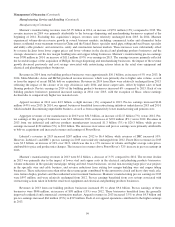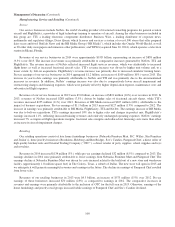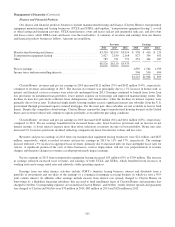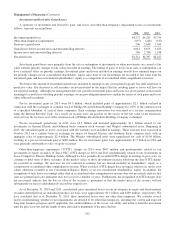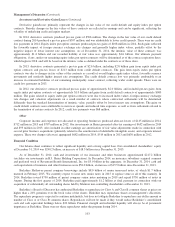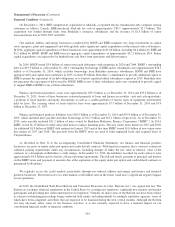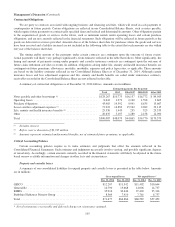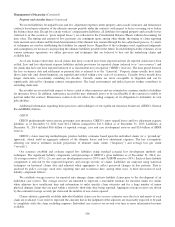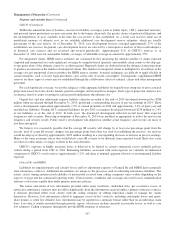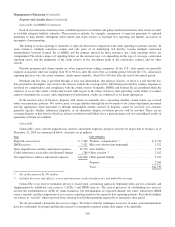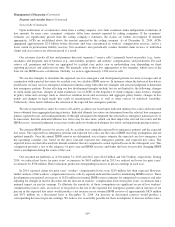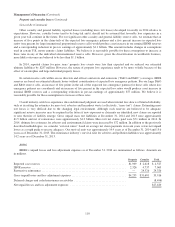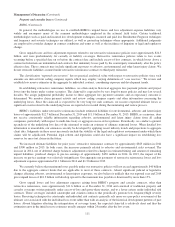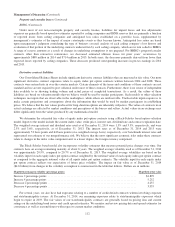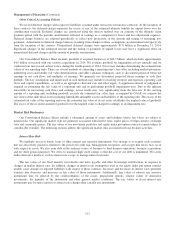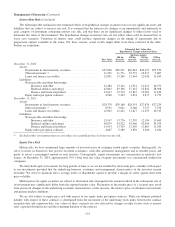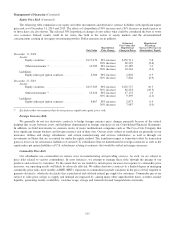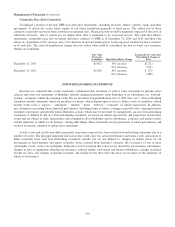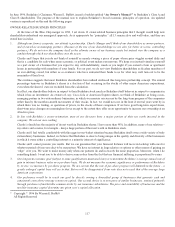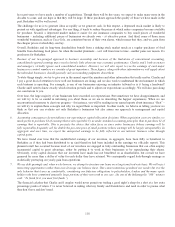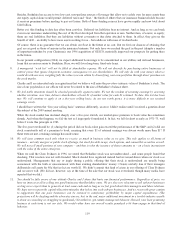Berkshire Hathaway 2014 Annual Report Download - page 111
Download and view the complete annual report
Please find page 111 of the 2014 Berkshire Hathaway annual report below. You can navigate through the pages in the report by either clicking on the pages listed below, or by using the keyword search tool below to find specific information within the annual report.Management’s Discussion (Continued)
Property and casualty losses (Continued)
General Re (Continued)
Upon notification of a reinsurance claim from a ceding company, our claim examiners make independent evaluations of
loss amounts. In some cases, examiners’ estimates differ from amounts reported by ceding companies. If the examiners’
estimates are significantly greater than the ceding company’s estimates, the claims are further investigated. If deemed
appropriate, ACRs are established above the amount reported by the ceding company. As of December 31, 2014, ACRs
aggregated approximately $2.0 billion before discounts and were concentrated in workers’ compensation reserves, and to a
lesser extent in professional liability reserves. Our examiners also periodically conduct detailed claim reviews of individual
clients and case reserves are often increased as a result.
Our actuaries classify all loss and premium data into segments (“reserve cells”) primarily based on product (e.g., treaty,
facultative and program), line of business (e.g., auto liability, property, and workers’ compensation), and jurisdiction. For each
reserve cell, premiums and losses are aggregated by accident year, policy year or underwriting year (depending on client
reporting practices) and analyzed over time. We internally refer to these loss aggregations as loss triangles, which serve as the
basis for our IBNR reserve calculations. Globally, we review approximately 1,200 reserve cells.
We use loss triangles to determine the expected case loss emergence and development patterns for most coverages and, in
conjunction with expected loss ratios by accident year, we calculate IBNR reserves. In instances where the historical loss data is
insufficient, we may use loss emergence estimation formulae along with other loss triangles and actuarial judgment to determine
loss emergence patterns. Factors affecting our loss development triangles include, but are not limited to, the following: changes
in client claims practices, changes in claim examiners’ use of ACRs or the frequency of client company claim reviews, changes
in policy terms and coverage (such as client loss retention levels and occurrence and aggregate policy limits), changes in loss
trends and changes in legal trends that result in unanticipated losses, as well as other sources of statistical variability.
Collectively, these factors influence the selection of the expected loss emergence patterns.
We select expected loss ratios by reserve cell and by accident year based upon indicated ultimate loss ratios and forecasted
losses obtained from aggregated pricing statistics. Indicated ultimate loss ratios are determined from the selected loss emergence
pattern, reported losses and earned premiums. If through subsequent development the selected loss emergence pattern proves to
be inaccurate, then the indicated ultimate loss ratios may be inaccurate, which can then impact the selected loss ratios and the
IBNR reserve. Actuarial judgment is necessary in the analysis of indicated ultimate loss ratios and department pricing statistics.
We estimate IBNR reserves by reserve cell, by accident year, using the expected loss emergence patterns and the expected
loss ratios. The expected loss emergence patterns and expected loss ratios are the critical IBNR reserving assumptions and are
updated annually. Once the annual IBNR reserves are determined, our actuaries estimate the expected case loss emergence for
the upcoming calendar year, based on the prior year-end expected loss emergence patterns and expected loss ratios. The
expected losses are then allocated into interim estimates that are compared to actual reported losses in the subsequent year. This
comparison provides a test of the adequacy of prior year-end IBNR reserves and forms the basis for possibly changing IBNR
reserve assumptions during the course of the year.
Our recorded net liabilities as of December 31, 2013 and 2012 were $14.8 billion and $14.9 billion, respectively. During
2014, we reduced net losses for prior years’ occurrences by $410 million and in 2013 we reduced net losses for prior years’
occurrences by $728 million. These reductions produced corresponding increases in pre-tax earnings in each year.
In 2014, reported claims for prior years’ workers’ compensation losses were $219 million less than expected. However,
further analysis of the workers’ compensation reserve cells by segment indicated the need for maintaining IBNR reserves. These
developments precipitated an increase of $120 million in nominal IBNR reserve estimates for unreported occurrences and after
adjusting for changes in reserve discounts, the net increase in workers’ compensation losses from prior years’ occurrences had a
minimal impact on pre-tax earnings. To illustrate the sensitivity of these assumptions on significant excess-of-loss workers’
compensation reserve cells, an increase of ten points in the tail of the expected loss emergence pattern and an increase of ten
percent in the expected loss ratios would produce a net increase in our nominal IBNR reserves of approximately $824 million
and $471 million on a discounted basis at December 31, 2014. An increase in discounted reserves would produce a
corresponding decrease in pre-tax earnings. We believe it is reasonably possible for these assumptions to increase at these rates.
109


